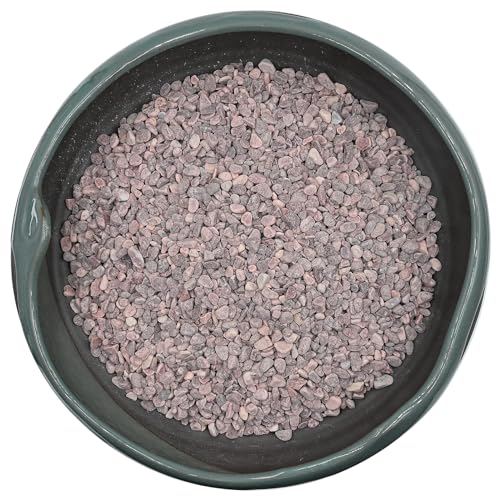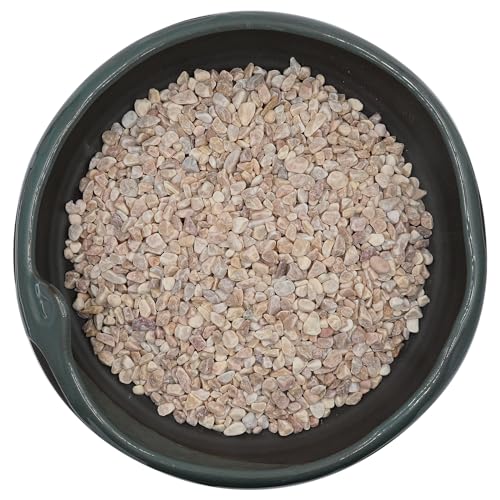Creating a gravel garden path has always been a favorite project of mine. There’s something so charming and practical about winding your way through your garden on a bed of smooth stones. It not only enhances the look of your space but also provides a durable walkway that stands up to all kinds of weather.

I love how simple it is to design a gravel path, allowing for plenty of creativity in every step. From choosing the right type of gravel to outlining the perfect route, each decision makes the space uniquely yours. Plus, it’s an affordable way to transform your outdoor area into a welcoming haven where you can relax and enjoy nature.
Benefits of a Gravel Garden Path
I find that gravel garden paths offer numerous advantages, enhancing both functionality and aesthetics.
Durability ensures a long-lasting walkway. Gravel withstands heavy rain, snow, and foot traffic without deteriorating quickly.
Cost-Effectiveness provides an affordable pathway solution. Installing gravel paths requires lower initial investment compared to paved alternatives and minimal upkeep costs.
Aesthetic Appeal adds visual interest to the garden. A variety of gravel colors and textures allow customization to match your garden’s style, creating an inviting atmosphere.
Easy Installation simplifies the process. Establishing a gravel path involves fewer tools and less labor, allowing straightforward setup.
Low Maintenance reduces ongoing care requirements. Gravel paths don’t demand frequent repairs and can be refreshed by adding more gravel as needed.
Excellent Drainage prevents water accumulation. Gravel allows rainwater to pass through, avoiding puddles and reducing erosion risks along the path.
Planning Your Gravel Path
Planning is essential to ensure your gravel path complements your garden and serves its purpose effectively.
Choosing the Right Location
Selecting the optimal location for your gravel path enhances both functionality and aesthetics. Consider high-traffic areas, such as entrances or between garden beds, to maximize usability. Ensure the chosen spot has proper drainage to prevent gravel displacement during heavy rains. Additionally, position the path to highlight key features of your garden, like a flower bed or a seating area.
Designing the Path Layout
Designing a thoughtful layout ensures your gravel path flows naturally through your garden. Start by sketching the desired shape, whether it’s straight, curved, or meandering, to match your garden’s style. Determine the path’s width based on foot traffic; a standard width ranges from 12 to 18 inches. Incorporate gentle slopes to facilitate drainage and prevent water pooling. Finally, mark the path boundaries using landscape edging to maintain a clean and defined appearance.
Materials and Tools Needed
Creating a gravel garden path requires careful selection of materials and the right tools to ensure a durable and attractive walkway.
Selecting Gravel Types
Choosing the right gravel is crucial for both aesthetics and functionality. I use different gravel sizes for various purposes:
- Base Gravel: 3/4-inch crushed stone offers stability and drainage.
- Path Gravel: 1/4-inch pea gravel provides a smooth surface for walking.
- Decorative Gravel: Colored glass or river rocks enhance visual appeal.
Consider the color and texture to complement your garden’s design. Ensure the gravel type suits your local climate to prevent displacement and maintain longevity.
Essential Tools
Having the correct tools makes installing a gravel path efficient. I gather the following:
- Shovel: For digging and moving materials.
- Rake: To level the base and spread gravel evenly.
- Wheelbarrow: Essential for transporting gravel and base materials.
- Landscape Edging: Keeps gravel contained and maintains path shape.
- Tamper or Plate Compactor: Compacts the base for a stable foundation.
- Garden Hose or String Line: Marks the path layout accurately.
These tools help streamline the installation process, ensuring a professional-looking gravel path.
Step-by-Step Installation Guide
Creating a gravel garden path involves several key steps to ensure durability and aesthetic appeal. Here’s how I approach the installation process.
Preparing the Ground
First, mark the path’s layout using string and stakes to outline the desired shape. Then, remove any existing grass, weeds, or debris within the marked area using a shovel or a sod cutter. Next, dig down to a depth of 4 to 6 inches to accommodate the base layers. Ensure the ground slopes slightly away from structures for proper drainage. Finally, compact the soil using a tamper or plate compactor to create a stable foundation.
« How to Maintain a Water Feature: Essential Tips for Year-Round Beauty How to Create a DIY Rock Garden: Easy Steps for a Beautiful Outdoor Space »
Laying the Base
Begin by spreading a 2 to 3-inch layer of landscape fabric over the compacted soil to prevent weed growth. Next, add a 4-inch layer of crushed stone or gravel as the base material. Use a rake to distribute the base evenly, then compact it firmly with the tamper or plate compactor. This base layer ensures stability and proper drainage for the pathway.
Adding the Gravel
Choose the gravel type based on your garden’s aesthetic and functionality needs. Spread a 2 to 3-inch layer of decorative gravel over the compacted base, ensuring an even distribution. Use a rake to level the gravel, filling in any low spots. Finally, edge the path with landscape edging to keep the gravel in place and maintain a clean boundary.
Maintenance Tips
Regular Raking
I rake the gravel path weekly to redistribute stones evenly. This action prevents uneven surfaces and maintains a smooth walkway.
Weeding
I remove weeds by hand or apply a weed killer safe for gravel paths monthly. Keeping weeds at bay ensures a clean and attractive path.
Adding Gravel
I add fresh gravel annually, especially in high-traffic areas. Topping up keeps the path’s appearance and functionality intact.
Edge Maintenance
I inspect and secure landscape edging every few months. Proper edging holds the gravel in place and preserves the path’s shape.
Seasonal Care
I clear snow and ice from the path during winter to prevent gravel displacement. In rainy seasons, I monitor drainage and make necessary adjustments to avoid water accumulation.
Compaction
I lightly compact the gravel as needed using a hand tamper. Compacting reduces ruts and maintains a stable surface.
Inspecting for Erosion
I check the path regularly for signs of erosion or gravel washout. Addressing erosion promptly keeps the path durable and safe.
Preventing Sand and Soil Infiltration
I ensure the base layer remains intact by occasionally adding a layer of landscape fabric. This step prevents sand and soil from mixing with the gravel, maintaining path integrity.
Cleaning Debris
I remove leaves, branches, and other debris from the gravel path frequently. Keeping the path free from debris enhances its appearance and prevents blockages.
Monitoring Drainage
I assess the path’s drainage system biannually. Ensuring proper drainage prevents water pooling and protects the gravel structure.
Conclusion
Creating a gravel garden path has been one of my favorite projects. There’s something truly rewarding about seeing a simple pathway transform your garden space. The blend of functionality and natural beauty makes it a perfect addition to any outdoor area.
I love how customizable gravel paths are, allowing each one to reflect personal style and garden needs. The low maintenance and durability give me peace of mind, knowing my path will withstand the seasons with ease.
If you’re considering enhancing your garden, a gravel path might just be the perfect touch. It’s an affordable way to add charm and practicality, making your outdoor space even more inviting. Give it a try and enjoy the simple pleasures it brings to your garden.
















